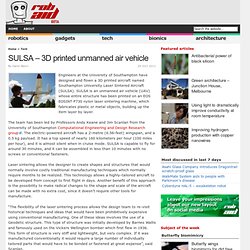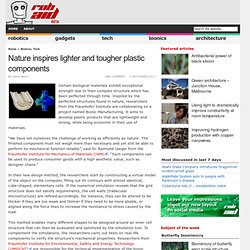

NASA Looks to 3D Printing for Spare Space-Station Parts. Launch $1-billion-worth of spare parts to the International Space Station, and you can keep Earth's orbital outpost going for another decade.

Send up some 3D-printing devices, and you invest in the ability to build everything on demand in space: space-station parts, astronaut tools, satellites, even spacecraft. A first step toward space factories may come from NASA's recent selection of a U.S. startup's proposal to build a 3D printer for the space station. Such printing technology could build any number of objects, layer by layer, based on designs uploaded from mission control. Astronauts would only need "feedstock" material, such as plastic or metal, to make new tools or spare parts on the fly. "When a tool breaks, at the very worst the space-station crew calls Houston and says, 'Send us a CAD (computer-aided design) file of that tool,' and they'll be able to 3D-print it," said Jason Dunn, chief technology officer and cofounder of Made in Space, Inc. Rapid Fit+
Engineers fly world's first 'printed' aircraft. Engineers at the University of Southampton have designed and flown the world's first 'printed' aircraft, which could revolutionise the economics of aircraft design.

The SULSA (Southampton University Laser Sintered Aircraft) plane is an unmanned air vehicle (UAV) whose entire structure has been printed, including wings, integral control surfaces and access hatches. It was printed on an EOS EOSINT P730 nylon laser sintering machine, which fabricates plastic or metal objects, building up the item layer by layer. No fasteners were used and all equipment was attached using 'snap fit' techniques so that the entire aircraft can be put together without tools in minutes. The electric powered vehicle aircraft, with a 2-metres wingspan, has a top speed of nearly 100 miles per hour, but when in cruise mode is almost silent. The aircraft is also equipped with a miniature autopilot developed by Dr Matt Bennett, one of the members of the team.
SULSA – 3D printed unmanned air vehicle. Engineers at the University of Southampton have designed and flown a 3D printed aircraft named Southampton University Laser Sintered Aircraft (SULSA).

SULSA is an unmanned air vehicle (UAV) whose entire structure has been printed on an EOS EOSINT P730 nylon laser sintering machine, which fabricates plastic or metal objects, building up the item layer by layer. The team has been led by Professors Andy Keane and Jim Scanlan from the University of Southampton Computational Engineering and Design Research group. The electric-powered aircraft has a 2-metre (6.56-feet) wingspan, and a 0.5 kg payload. It has a top speed of nearly 160 kilometers per hour (100 miles per hour), and it is almost silent when in cruise mode. SULSA is capable to fly for around 30 minutes, and it can be assembled in less than 10 minutes with no screws or conventional fasteners. The manufacturing process relies on the CAD modeling and laser sintering process. Nature inspires lighter and tougher plastic components.
Certain biological materials exhibit exceptional strength due to their complex structure which has been perfected through time.

Inspired by the perfected structures found in nature, researchers from the Fraunhofer Institute are collaborating on a project named Bionic Manufacturing. It aims to develop plastic products that are lightweight and strong, while being economic in their use of materials. “We have set ourselves the challenge of working as efficiently as nature: The finished component must not weigh more than necessary and yet still be able to perform its mechanical function reliably”, said Dr.
Raimund Jaeger from the Fraunhofer Institute for Mechanics of Materials (IWM). “Such components can be used to produce consumer goods with a high aesthetic value, such as designer chairs.” In their new design method, the researchers start by constructing a virtual model of the object on the computer, filling out its contours with almost identical, cube-shaped, elementary cells.